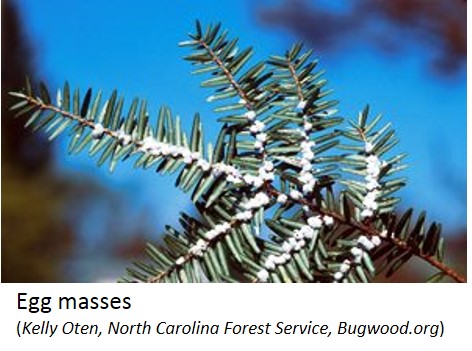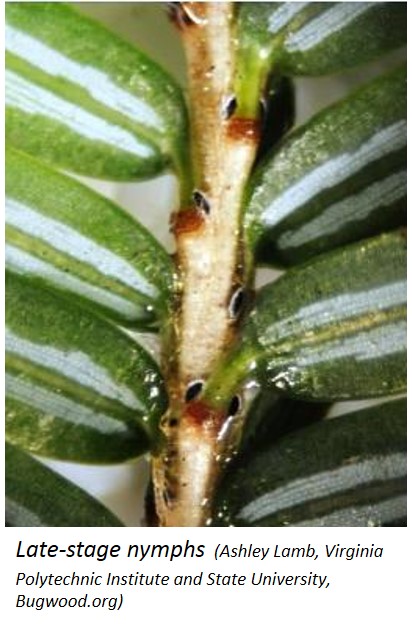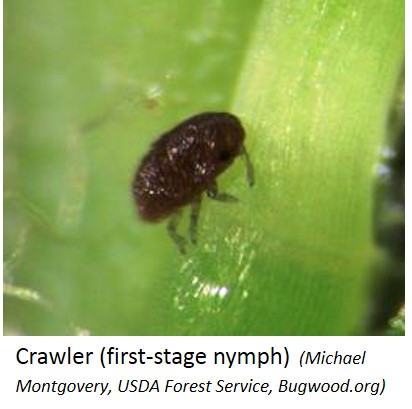 Hemlock woolly adelgid
Adelges tsugae Annand (pronounced uh DEL jid) is a tiny fluid-feeding insect that kills eastern hemlock trees (Tsuga canadensis). It has not been found in Wisconsin to date. The Wisconsin Department of Agriculture has an "exterior quarantine" in place to restrict imports of items that could introduce hemlock woolly adelgid to the state.
Hemlock woolly adelgid
Adelges tsugae Annand (pronounced uh DEL jid) is a tiny fluid-feeding insect that kills eastern hemlock trees (Tsuga canadensis). It has not been found in Wisconsin to date. The Wisconsin Department of Agriculture has an "exterior quarantine" in place to restrict imports of items that could introduce hemlock woolly adelgid to the state.
HWA is native to Asia. It has been in the western United States since at least 1924, but doesn't seriously damage western hemlock. In 1951, it was found in Virginia and has since spread to 20 eastern states, damaging and killing many eastern and Carolina hemlocks.
HWA has a complex life cycle. Females reproduce asexually, with two generations a year. Females overwinter and lay 50-300 eggs in sacs 
 after maturing in early spring. The sacs look like the tips of cotton swabs on the undersides of branches, giving the insect its common name. The immature crawlers, or first-stage nymphs, which are the only mobile stage of the insect, emerge from eggs in April to May and settle at the base of hemlock needles to feed. Wind, birds or mammals may carry them to nearby hemlocks. As they feed, they develop into nymphs and then adults that lay 50-300 eggs from late May to early June. Crawlers emerge from these eggs and settle onto feeding sites, become dormant nymphs until late fall, and then develop into nymphs that feed through the winter and early spring.
after maturing in early spring. The sacs look like the tips of cotton swabs on the undersides of branches, giving the insect its common name. The immature crawlers, or first-stage nymphs, which are the only mobile stage of the insect, emerge from eggs in April to May and settle at the base of hemlock needles to feed. Wind, birds or mammals may carry them to nearby hemlocks. As they feed, they develop into nymphs and then adults that lay 50-300 eggs from late May to early June. Crawlers emerge from these eggs and settle onto feeding sites, become dormant nymphs until late fall, and then develop into nymphs that feed through the winter and early spring.
Feeding causes hemlocks to take on a gray-green appearance and leads to needle loss, dieback, and mortality in as little as four years.
If you suspect you have found hemlock woolly adelgid, cut a sample of the affected branch and call DATCP at (866) 440-7523 or take a clear photo and email it to the address at left.
Most of Wisconsin's hemlocks are in the north, especially the northeast. Hemlocks are evergreen, shade-tolerant and long-lived, often growing on streambanks. They moderate water temperatures, reduce erosion, and support wildlife including birds, fish and mammals.
Quarantine requirements
Back to main pest and disease page